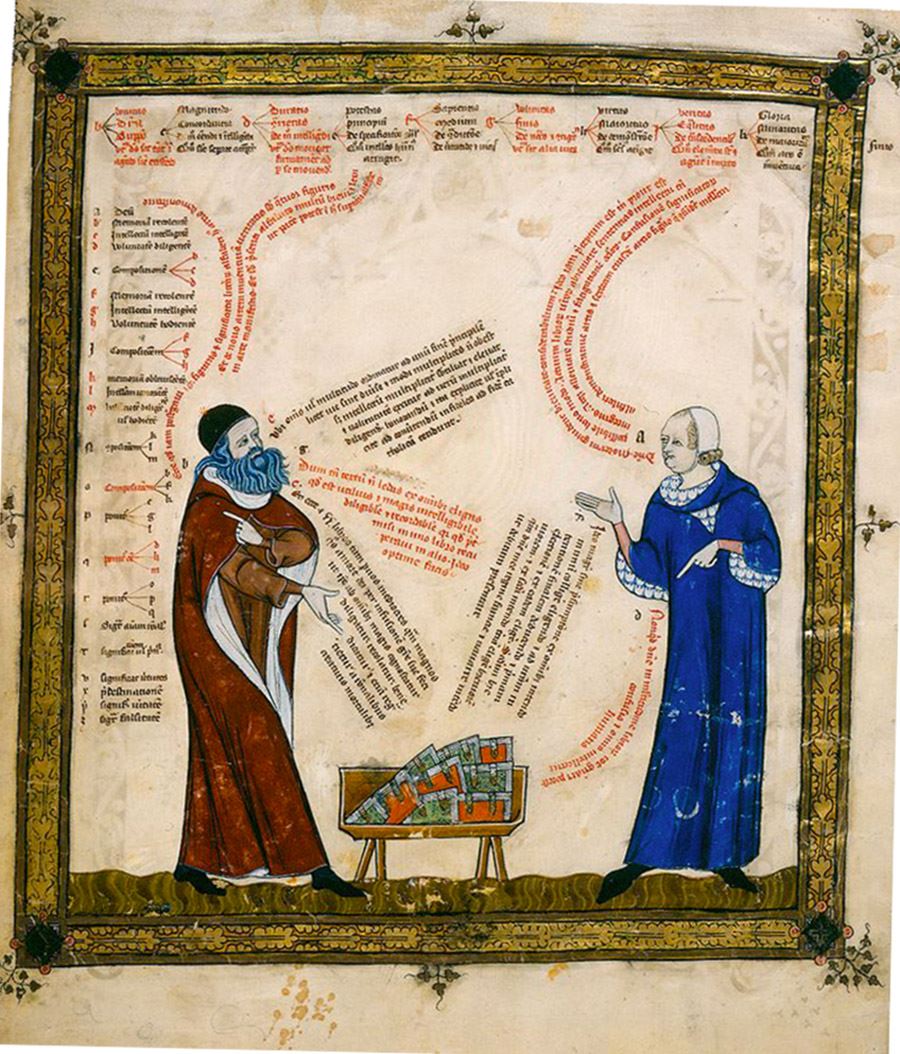
Cangjie, c. 2650 BCE
Legend has it that a man with four eyes who may or may not have lived in a mossy cave invented the Chinese writing system. Cangjie was record keeper for the Yellow Emperor, circa 2700 BCE, and times had become too complex to continue archiving with sequences of knots in rope. He needed a more robust mnemonic device. So Cangjie rolled up his sleeves and got busy: staring at clouds, following bird tracks, mulling over veins in turtles’ shells. By observing natural patterns, he realized how forms and experiences could be translated into pictographs. The invention of script was said to be so astounding that grain rained from the sky and ghosts cried in the night, lamenting the living’s forthcoming tell-alls. And the poor turtles—their shells were used as substrates for divination.
Centuries after this new technology hit the streets, we’ve become blasé about the transubstantiation that occurs when spoken word morphs into mark. “Speech is unique among systems of animal communication,” writes Michael Studdert-Kennedy in The Handbook of Speech Perception, “in being amenable to transduction into an alternative percetuomotor modality.” Alphabetic writing, in particular, is a synesthetic experience: drawings of sounds that when seen (read) effervesce back into sound. This is no small feat. Studdert-Kennedy notes: “We can understand language through the artificial medium of print as quickly and efficiently as through the natural medium of speech.” Yet: “Alphabetic writing and reading have no independent biological base; they are, at least in origin, parasitic on spoken language.” This parasitism is at the core of culture. Think, for example, Renaissance. Or Saussure’s semiotics. Or closed-captioned Britcoms.
Imagine a medieval scriptorium with monks hunched over lambskins copying words that many of them couldn’t read. The blush was not entirely off the rose of writing; it seemed a potency best kept chained to a lectern. Silent reading hadn’t been conceived yet, and there must have been some uneasiness about where the human voice went when it slipped into form as ink staining animal skin. In a 1322 manuscript about the preaching of Ramon Llull, strings of rubricated dialogue float free from their speaker, not unlike how novelist Jeanette Winterson imagines utterances thickening the skies in Sexing the Cherry. But unlike in Winterson’s scenario, the Breviculum Codex’s buoyant wordiness doesn’t need scrubbing from the parchment’s skies.

Electorium Parvum seu Breviculum, 1322, Baden Memorial Library, Karlsruhe, Germany
In 1947 R.K. Potter, Director of Transmission Research at Bell Telephone Laboratories, published a book called Visible Speech. During WWII the US military funded research into directly rendering speech legible, in part to root out voiceprints of spies. In 1945 Potter patented the sound spectrograph, which Bell Labs touted after the war as a visionary device. Potter boasted in Visible Speech, “If it comes into general use as a voice-written language for the deaf it could even start a trend toward modernized writing and printing.”
 Spectrogram of “Science Unravels Speech,” Bell Telephone Laboratories
Spectrogram of “Science Unravels Speech,” Bell Telephone Laboratories
Alas, there was no Grain Rain (谷雨) and no ghosts howled in the night, but the spectrograph was instrumental in many discoveries, including that some birds can voice two sounds simultaneously, not unlike Tuvan throat singers. Four-eyed Cangjie may have invented a new way of seeing—one set of eyes for sight, the other for “hearing”—but the spectrograph allowed us to see the wild blip and blur of our “noise bursts” as they actually occur, with no neat mapping of phoneme onto grapheme.

